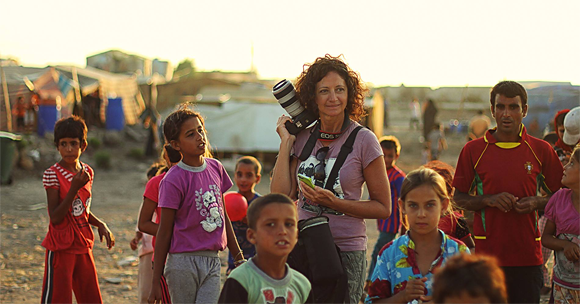
By Patricia Caso/October 19, 2014
TWITTER: @MimoKhair
Mimo Khair’s global photography struck me as stunning, emotional and captivating– whether it is still life, on the streets, with children or adults. I happened upon her unforgettable pictures while scrolling through different news sites on the internet.
“I love people and photographing them is for me a way of bringing us all closer together… I strive to create art that can ‘do something’.”
Mimo Khair
Wanting to know more about this talented Lebanese-American photographer, wife and mother who now resides in Shanghai, China, I tracked down Mimo through email.
I found an inspirational artist who is always looking to capture the connection in our humanity, hoping the viewer is moved by it as well…
EYE: I read that you grew up during the Civil War years in a small village in North Lebanon. Did that experience play into what you look for in your street photography and documentary photos?
MIMO: I think we are a culmination of our life experiences from the moment of birth or even conception. The first twelve years of life are, as we all know, very formative and my early years still echo strongly in everything I do.
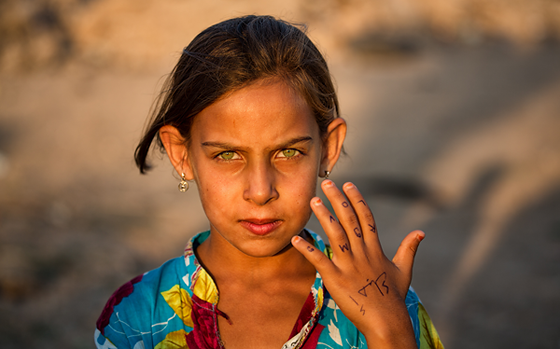
Growing up during the civil war created resilience in me as well as a renewed value for life and all that is good in it. I am caught by moments of human emotion, beauty, strength, sadness, humanity and love.
EYE: What were you planning to do with your life before you went to New York City?
MIMO: In Lebanon, girls were mostly expected to study, conform to rules of a conservative society and take their back seat in a male-dominant world. As soon as I reached adulthood in Lebanon I felt a very strong urge to break free from a binding situation and to be able to express myself without the hammer of judgment.
“Having an American mother, I was lucky to have the option of moving to New York. I moved against all odds and threw myself into a new, strange and fantastic world at age 20.”
EYE: What made you “pick up a camera” in 1995? And, what was your first photo?
MIMO: I came upon an old Pentax camera during a trip to New Zealand. It felt like destiny and I knew I would be doing a lot with that beautiful piece of machinery. My first photo was of Karekare’s black sand beach in New Zealand.
I went back there last year and photographed my 10-year-old daughter, Lea, on the very same beach.
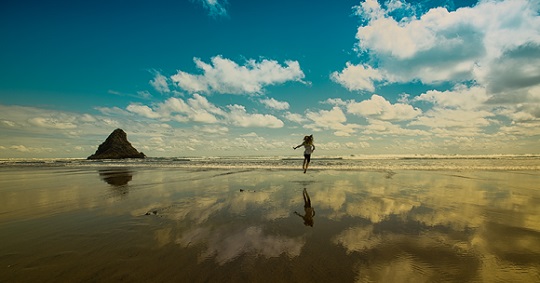
EYE: What captured your imagination when you started taking pictures?
MIMO: My first serious photography trip was in Egypt. It is safe to say that everything there captivated me, from the pyramids and sphinx of Giza to the magnificent temples and tombs, the beautiful Nile, the people, the light, the desert–all of it really.
EYE: How do you choose your subjects and do they always cooperate?
MIMO: When I am in the street, I allow myself to react to the environment. I mostly do not preplan my shots, but wait for situations to present themselves to me. It is a very organic process and the subjects appear as the minutes unfold.
“I find that a smile goes a very long way as well as warmth and a genuine interest in other peoples’ lives.”
When you do this for a long time, you become more and more sensitive to people and able to sense who will be receptive to being photographed. I love people and photographing them is for me a way of bringing us all closer together.
EYE: Why has street photography become such a passion for you?
MIMO: The subject, light, emotion, communication, composition, movement, and rhythm, are some of the factors that can combine to create a wonderful image. It is different each time, and this is what makes street photography such an amazing style to explore.
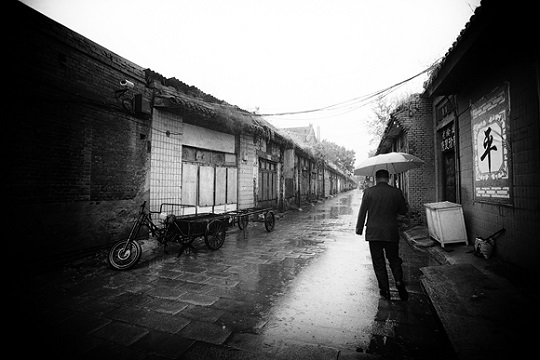
EYE: Your captions are terrific. Is writing equally important to you?
MIMO: Yes. I believe that words complement the image and can impart another level to the image that is personal to the photographer. I put it out without any expectation of it to be accepted as part of the image, but it makes me happy to combine the two forms of art.

EYE: You conduct workshops. Do you have advice for aspiring photographers?
MIMO: Teaching photography on a regular basis keeps me motivated to continue learning myself. And I love to see others getting inspired to break barriers in their photographic journey.
The best advice I can give is to do more and more of what you love. I tasked myself with a 365 project, where I took photos and posted the best one from each day with a small writing on my blog.
I did that for two years and it was very instrumental in my discipline as a photographer. I always advise people to try a discipline like that to get more hours of experience built into their journey.
EYE: Can cell phones be good for taking better-than-ordinary pictures? Is there any way to take a good “selfie”?
MIMO: I believe any camera is a good camera if you love what you are doing. The mobile phone camera ensures that you always can practice your art no matter where you are.
Some of the images out there are stunning and very inspiring. I do enjoy creating “selfies” in the way of image diary entries, especially reflection shots that can combine the reflection with the environment to make a mosaic of impressions.
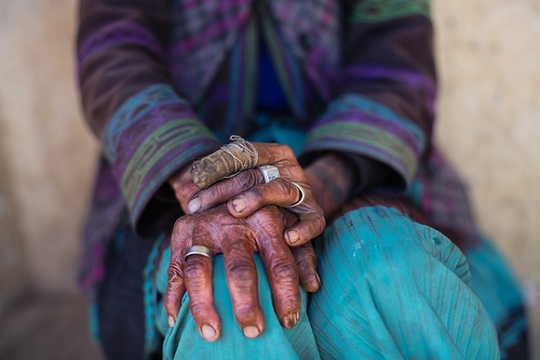
EYE: Do you think a photograph can make more of an impact than a video or the written or spoken word?
MIMO: A photograph can make an impact very differently. I would not say more. I believe that a photograph can act as an anchor point from which our imagination can propel us into uncharted territories of the mind.
A video is more of an usher that takes you on its predetermined journey. Similarly, words hold your hand and take you along. There is more mystery for me in an image. Like a painting or other visual arts, it allows for a lot more mind exploration and dreaming.
EYE: What or who inspires you?
MIMO: I believe that inspiration comes from all forms of art and not just photography. Sometimes when I am reading a book I find myself taking a note to create a specific photograph. Cinematic lighting is most inspiring and I find myself watching it repeatedly to learn about light.
“I am always looking at the works of old and modern masters to try and see what they saw.”
Art is for me an entity that moves between us all in all that we do, and the more we see, the better we understand it.
EYE: In traveling to some pretty remote and dangerous places, did you ever feel like you were in danger? How do you prepare for those assignments?
MIMO: The most dangerous place I traveled to was the Democratic Republic of Congo to interview child soldiers and street children. I had to be in an armored car while in the streets and I was not free to walk the streets on foot as I am used to.
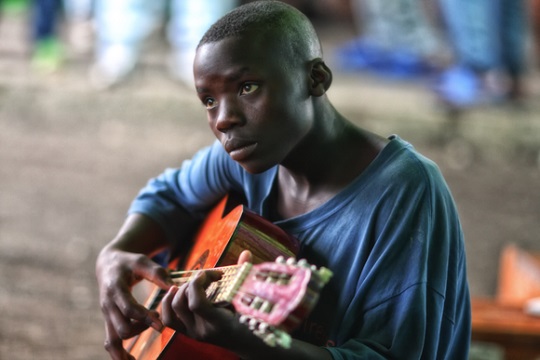
It did feel threatening at times, but I was completely immersed in the chase of my story and images. That excitement certainly overshadowed any sense of danger. The trip to Congo was hugely assisted by the United Nations and I could not have done it in any other way.
I mostly prepare in advance for a journey of this kind, but on some occasions, as I did with the refugee camps in Lebanon, I just walked in unassisted and on an impulse.
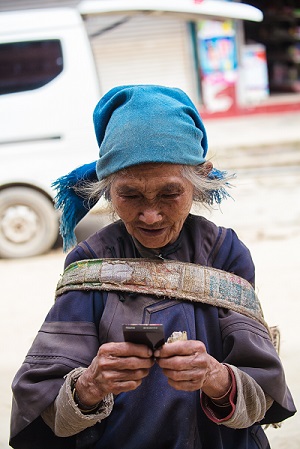
EYE: With your travels far and wide and now that you are living in Shanghai, what have you learned?
MIMO: I think moving around the planet and meeting more and more people, observing different cultures and customs has helped me see the human race in a different light.
We clothe our conflicts with causes of religion, race, country and political agendas, but in the end, people are people.
No matter where I have been, there is a common thread of humanity that is so bright, no amount of darkness can put it out.
EYE: What common traits among people have you found?
MIMO: Simple humanity. Kindness is the same everywhere you go; love between a parent and child has many faces, but it is the same at its core.
When I capture a look in the eyes, a smile or an intense emotion, location becomes a secondary consideration.
EYE: What has been the biggest change in the world you’ve seen since you began your career?
MIMO: The most striking change for me is how small the world has become and how much more connected or disconnected we can all be inside of it. I think that art in general and photography in particular have become widely accessible and, when used correctly, can be powerful tools for making the world a better place.
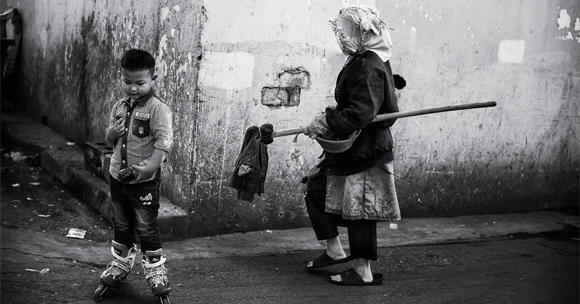
EYE: Do you have a mission with your photography?
MIMO: I strive to create art that can ‘do something’. I believe that we humans are meant to give expression to the essences of art in everything that we do and that we love doing.
EYE: Do you have a favorite story about any one of your pictures? Which was your most difficult picture to get so far?
MIMO: One of my favorite stories has to do with a Polaroid photograph I took of an old lady from the Yi minority in Yunnan. I photographed her and gave her the image, but she kept returning it to me with a nod and a smile.
After several attempts and a translation, I found out that she had no idea that the photo was hers. She actually had no idea or interest in knowing what she looked like. I found that stunning to realize in this day and age of compulsive selfies.
I can’t think of images that were difficult, but perhaps images of sadness or misery. I always tend to back away from and opt not to display the misfortune of others for the sake of my art unless I can manage to show the positive side of humanity that is hidden in the image.
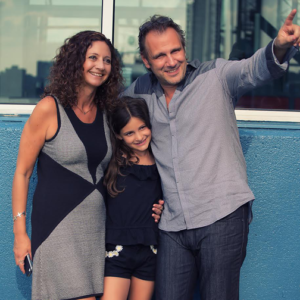
EYE: Are your husband and young daughter your ultimate critics?
MIMO: During the time that I did my 365 project, my husband was extremely instrumental in choosing my photo of the day.
He was almost always spot-on. My daughter is a very straightforward and honest critic. If she does not like it, I am sure to know it.
EYE: What are your current and future photo projects?
MIMO: I am researching the ethnic minorities of China currently, and I plan to take several more trips to complete my project.
I dream of taking long photographic journeys into uncharted territories, having the luxury of spending months rather than weeks, creating beautiful books that combine writing and imagery woven together to tell a tale.
EYE: Have you taken your best picture yet?
MIMO: No. I will keep searching for it till the end.
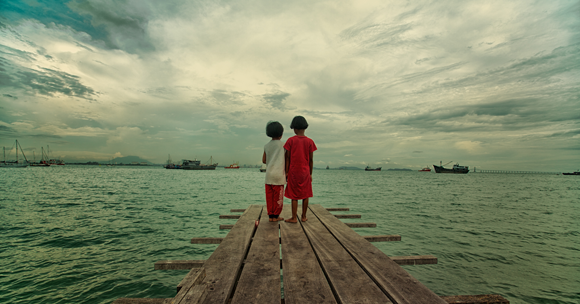
EYE: Your photographs stir emotions in hopeful, thoughtful, and beautiful ways! Much success to you and thanks for sharing your time, thoughts and pictures. Check Mimo Khair’s website for her latest insights and projects.
###



Leave a Reply